Visiting Texas - Day 7
/We left Big Bend NP (last post) about an hour before dusk without a real plan for where we'd stay that night. There were "campgrounds" outside of the park but those turned out to be RV parking lots. We figured that we would find something in Big Bend Ranch State Park, west of and adjacent to the National Park along the Rio Grande, and get in another day of hiking before Matt and I left the next morning from El Paso.
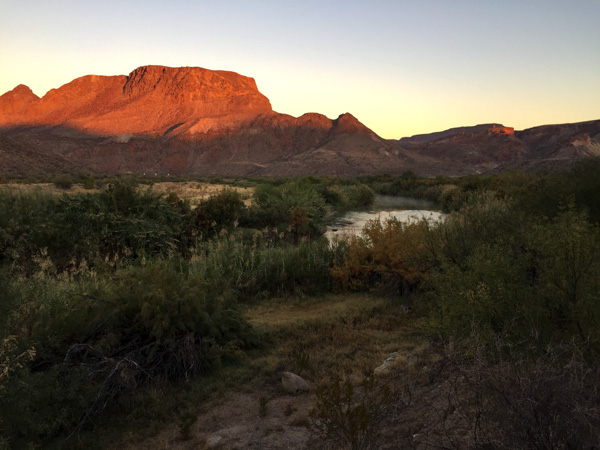 This is the area where we camped. I got up when I saw the sunrise to explore near the river. We had heard rapids but couldn't see the river from the campground.
This is the area where we camped. I got up when I saw the sunrise to explore near the river. We had heard rapids but couldn't see the river from the campground. 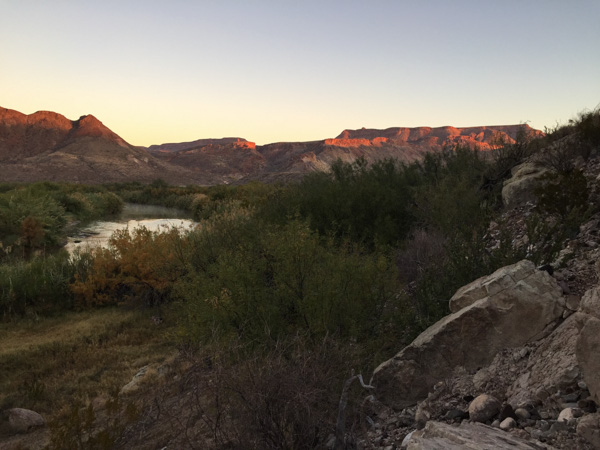 After all the signs at the previous day's stops I did start thinking about mountain lions as I walked along deer trails though those willows and brush to reach the river. So I made plenty of noise, but I also decided to move to higher ground where there was no cover.
After all the signs at the previous day's stops I did start thinking about mountain lions as I walked along deer trails though those willows and brush to reach the river. So I made plenty of noise, but I also decided to move to higher ground where there was no cover. 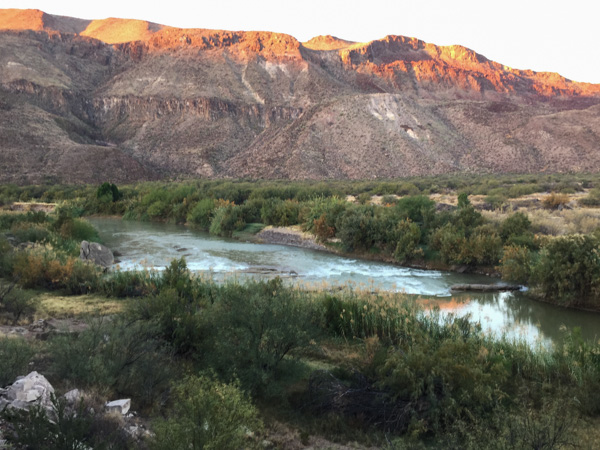 I was also glad when Matt showed up with the same idea (early morning photography) in mind.
I was also glad when Matt showed up with the same idea (early morning photography) in mind.
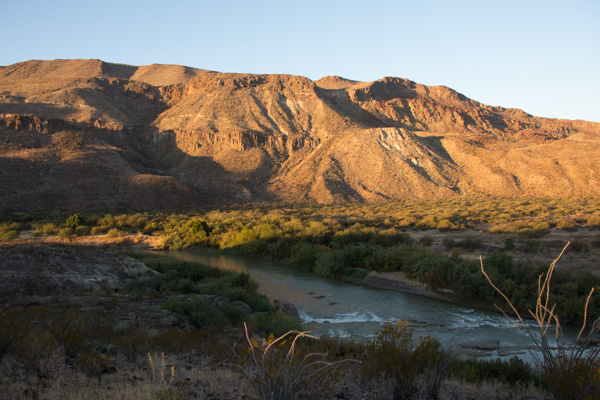 Logs and rocks in the river were enough to create the sound of rapids that we heard from camp.
Logs and rocks in the river were enough to create the sound of rapids that we heard from camp.
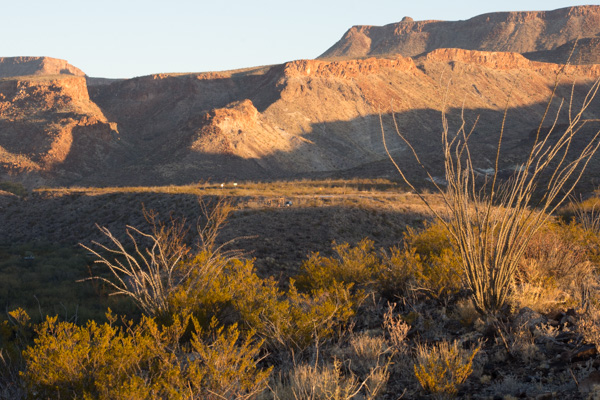 This is the view back to the camping area. That green speck in the middle is the truck.
This is the view back to the camping area. That green speck in the middle is the truck.
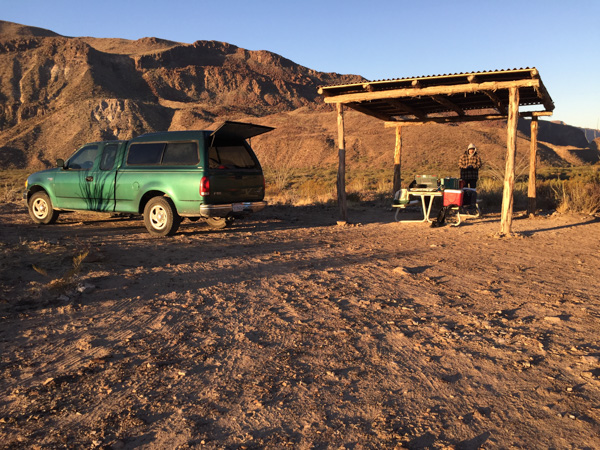
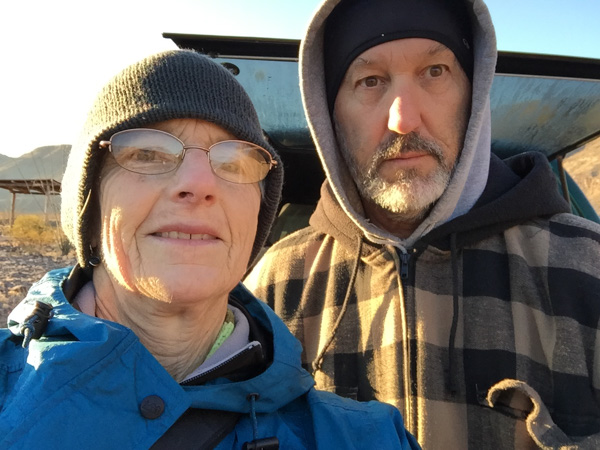
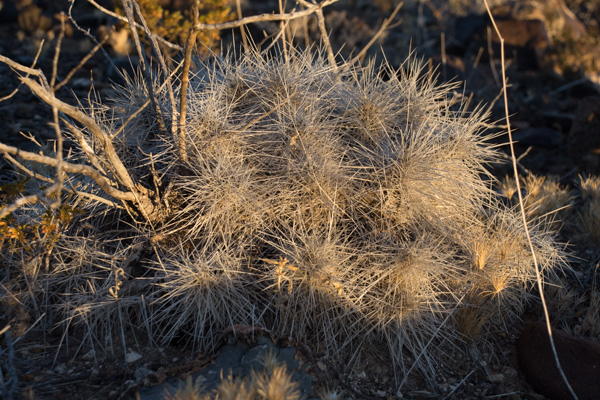
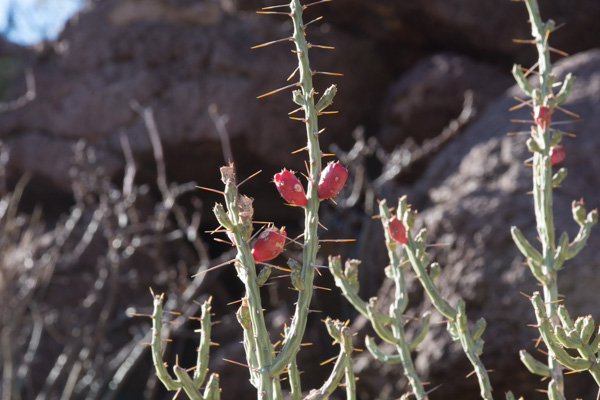 We looked at the map to see where we might hike in this park and found Closed Canyon.
We looked at the map to see where we might hike in this park and found Closed Canyon.
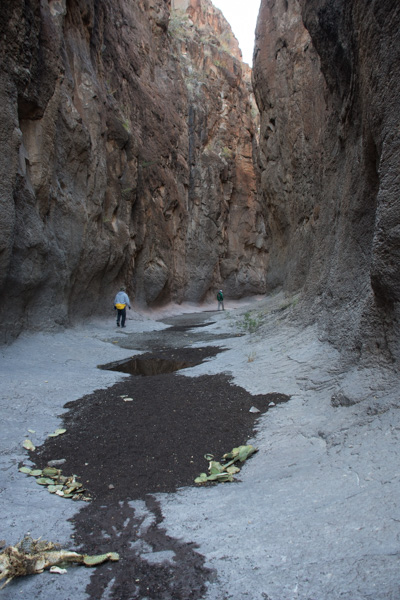 This is a canyon that leads to the Rio Grande.
This is a canyon that leads to the Rio Grande.
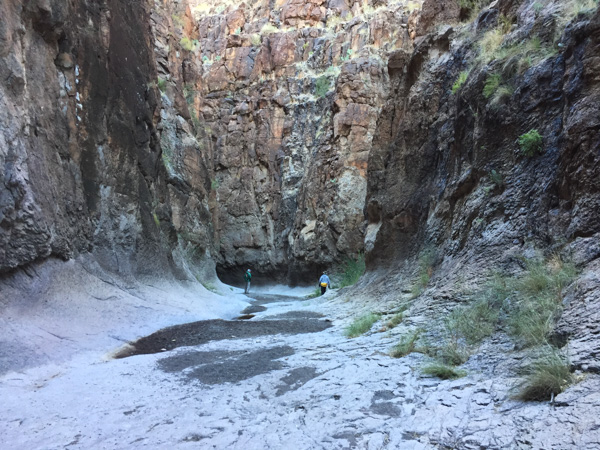 Absolutely stunning! The photos don't do it justice.
Absolutely stunning! The photos don't do it justice.
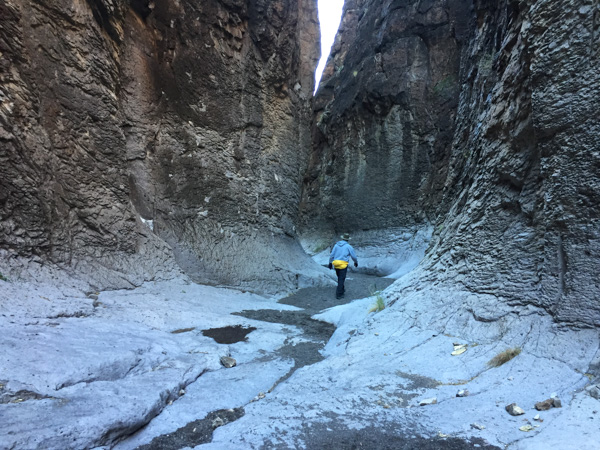
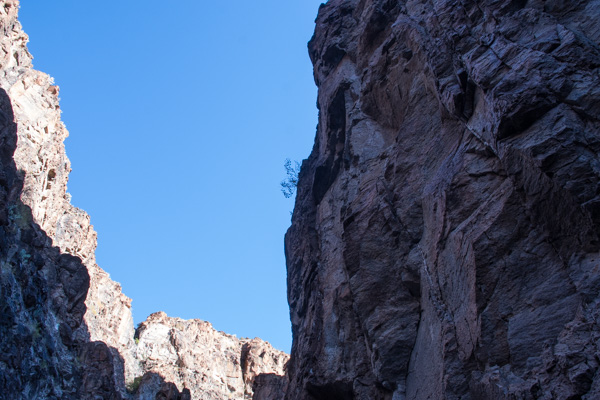
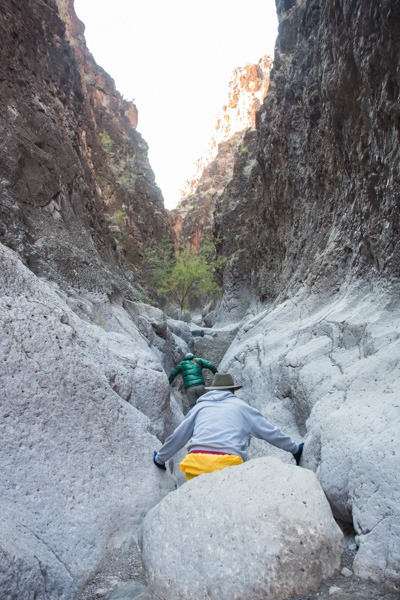 You can walk in about 7/10 of a mile before you can't go farther.
You can walk in about 7/10 of a mile before you can't go farther.
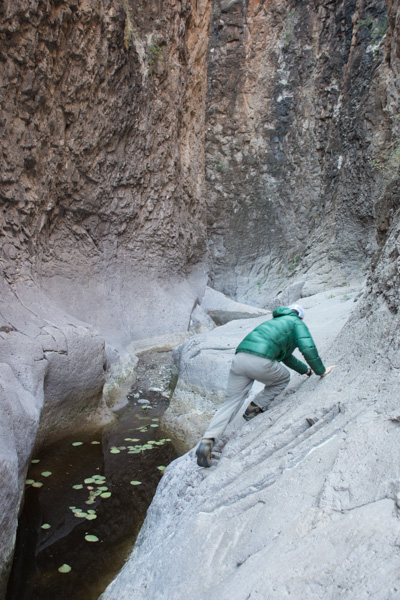 If you're a mountain goat you can try to go farther ... or if you want to get wet.
If you're a mountain goat you can try to go farther ... or if you want to get wet.
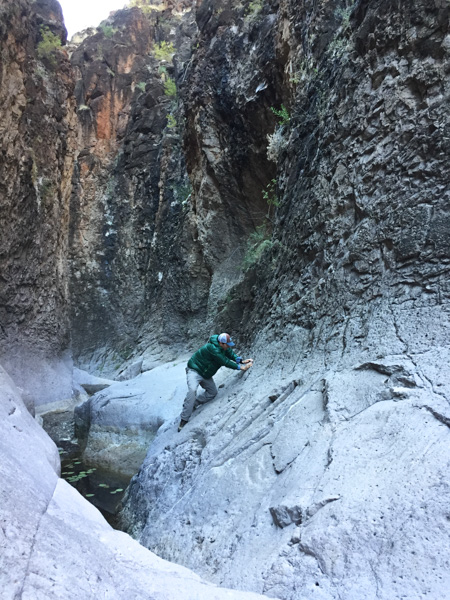 Matt went around the bend and came back. The map shows that it is a relatively short way to the river.
Matt went around the bend and came back. The map shows that it is a relatively short way to the river.
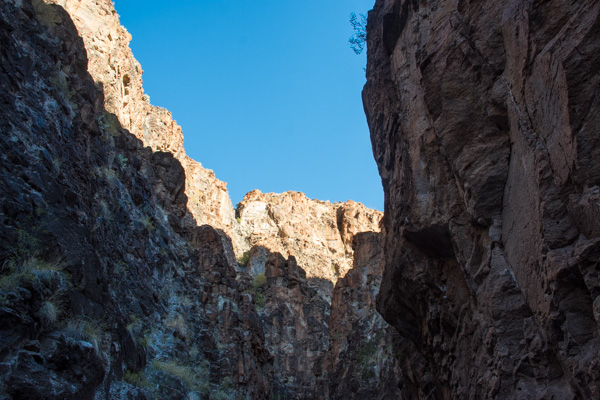
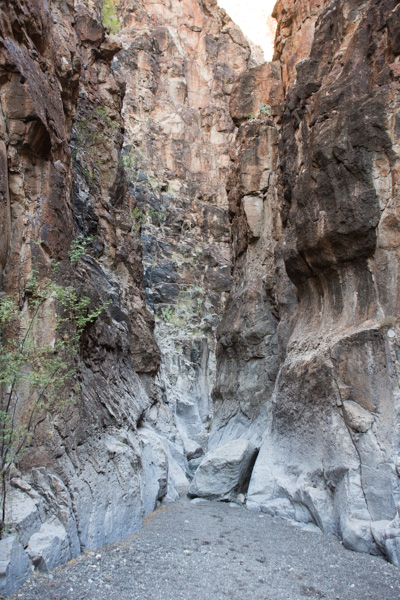 You wouldn't want to walk here in the flash flood season.
You wouldn't want to walk here in the flash flood season.
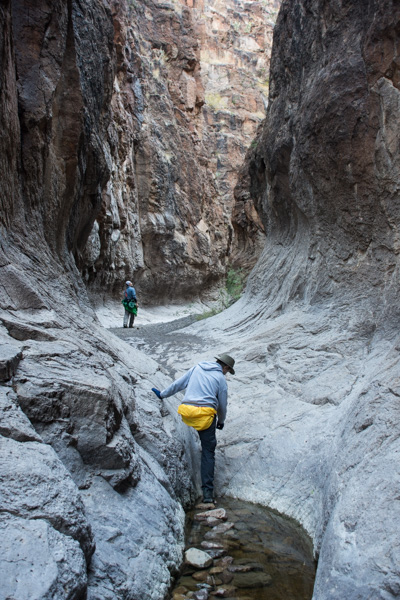
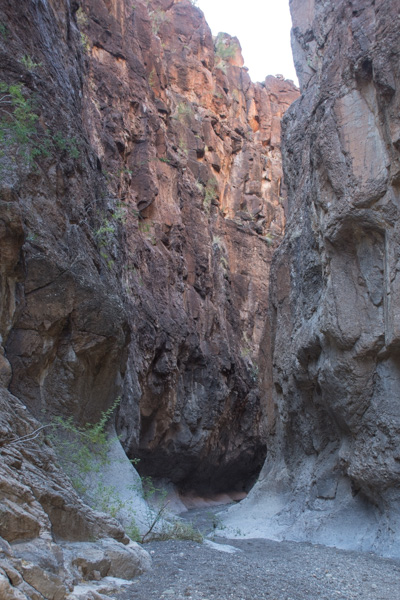
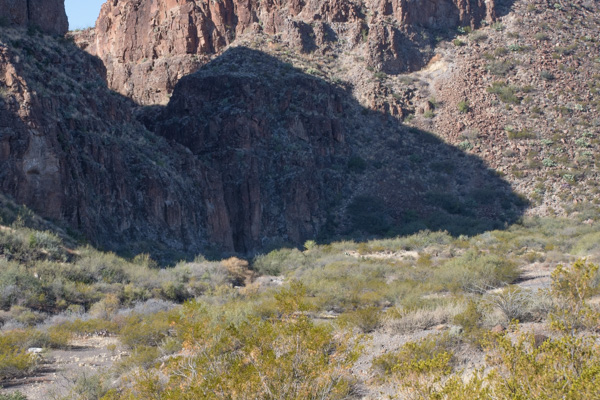 That slot in the shadow is the entrance to this incredible canyon.
That slot in the shadow is the entrance to this incredible canyon.
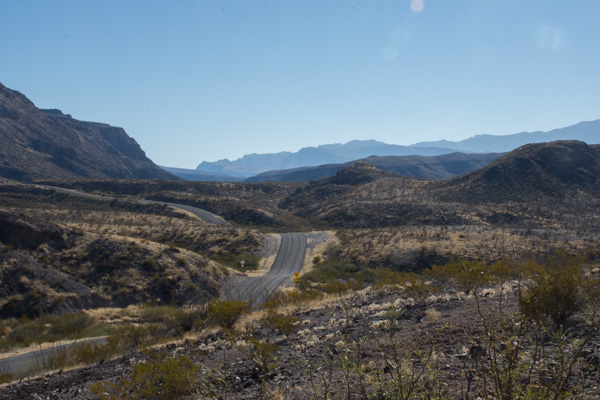 On the road again.
On the road again.
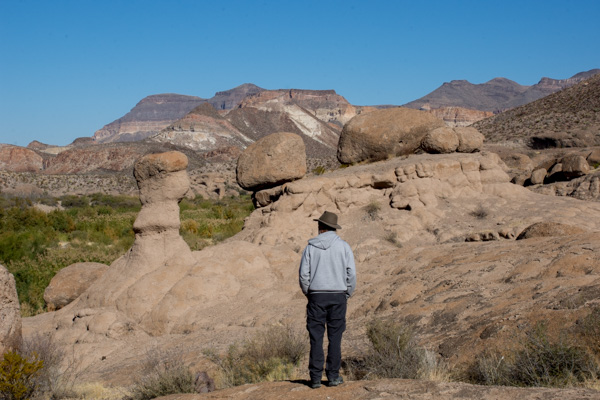 The next stop was the HooDoos Trail.
The next stop was the HooDoos Trail.
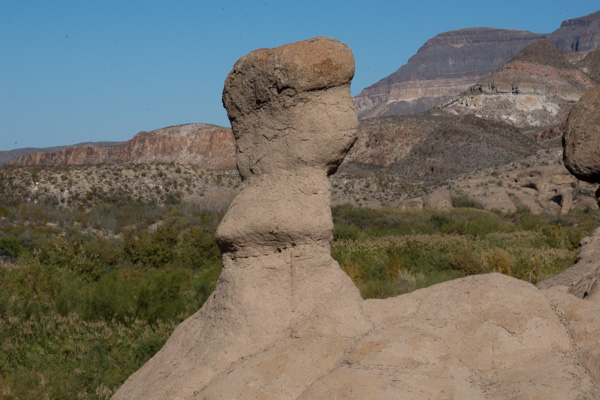 Hoodoos refers to these eroded formations.
Hoodoos refers to these eroded formations.
 Matt showed me how to do photos with my camera that you can later turn into panoramas. This isn't distorted like the pano shots on the phone.
Matt showed me how to do photos with my camera that you can later turn into panoramas. This isn't distorted like the pano shots on the phone.
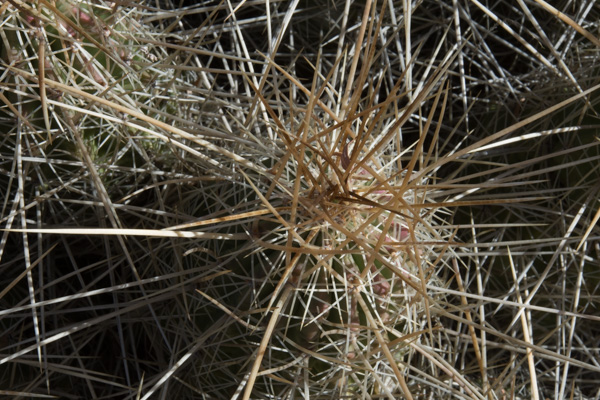 More spikey things.
More spikey things.
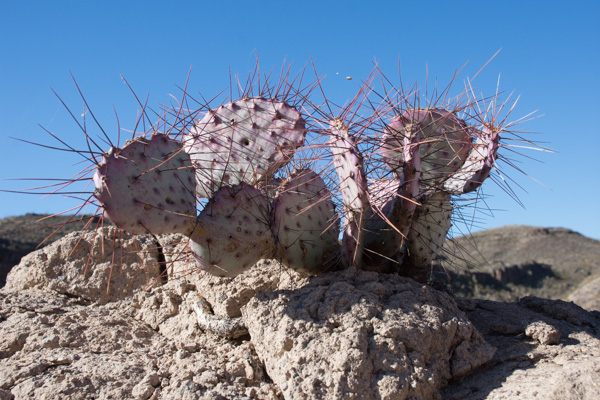 We left the park and were on our way to El Paso where we would spend the night and Matt and I would take an early flight home the next morning.
We left the park and were on our way to El Paso where we would spend the night and Matt and I would take an early flight home the next morning.
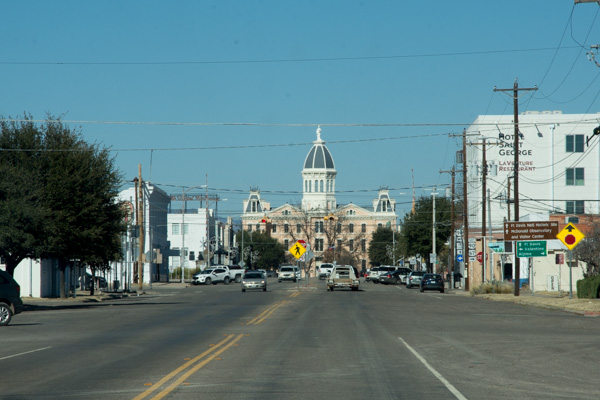 We entered the town of Marfa and Matt found on Trip Advisor that visitors could check out the dome of the city hall.
We entered the town of Marfa and Matt found on Trip Advisor that visitors could check out the dome of the city hall.
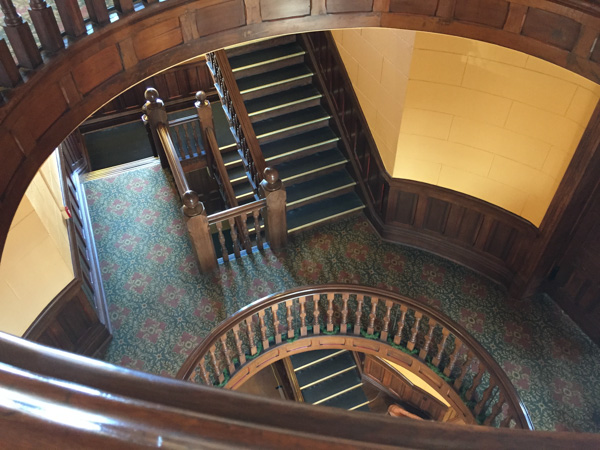 That was a good excuse to get out of the truck and stretch. This small West Texas town may be worth a second visit someday to investigate it's art venues and to find out more about the Marfa Lights (google that).
That was a good excuse to get out of the truck and stretch. This small West Texas town may be worth a second visit someday to investigate it's art venues and to find out more about the Marfa Lights (google that).
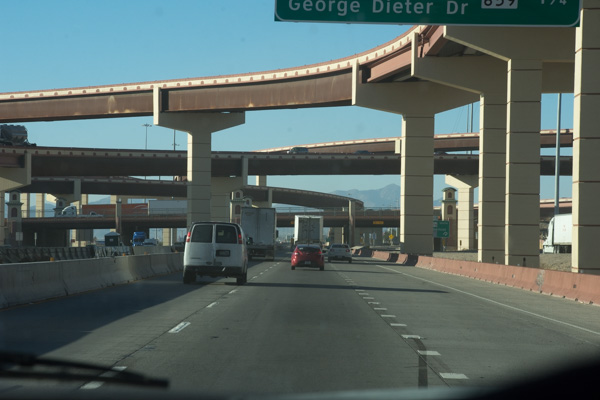 Entering El Paso.
Entering El Paso.
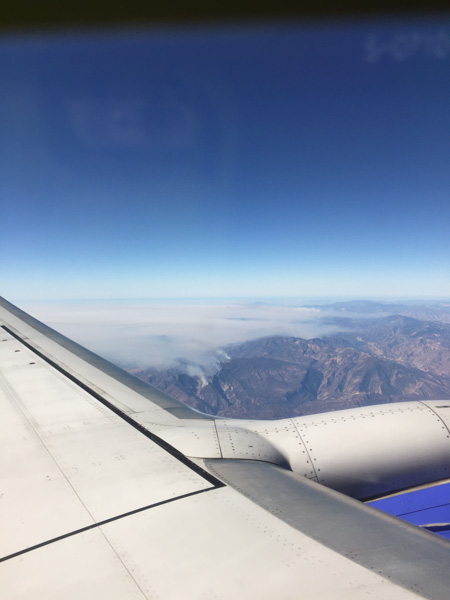 Flying over southern California where the fires were (are) still burning.
Flying over southern California where the fires were (are) still burning.
Home.

 Our first stop at the river was at raft/canoe take-out. Wildlife! I wish this was a sharper photo but I'm going to say that the javelina's coloring makes it look blurry. I just looked up javelina and learned something. Javelinas (collared peccary) are not in the same family as the pig. There are a multitude of physical differences including the type of stomach (complex versus simple), gestation length (5 months versus 3+ months), and structure of the leg and foot.
Our first stop at the river was at raft/canoe take-out. Wildlife! I wish this was a sharper photo but I'm going to say that the javelina's coloring makes it look blurry. I just looked up javelina and learned something. Javelinas (collared peccary) are not in the same family as the pig. There are a multitude of physical differences including the type of stomach (complex versus simple), gestation length (5 months versus 3+ months), and structure of the leg and foot.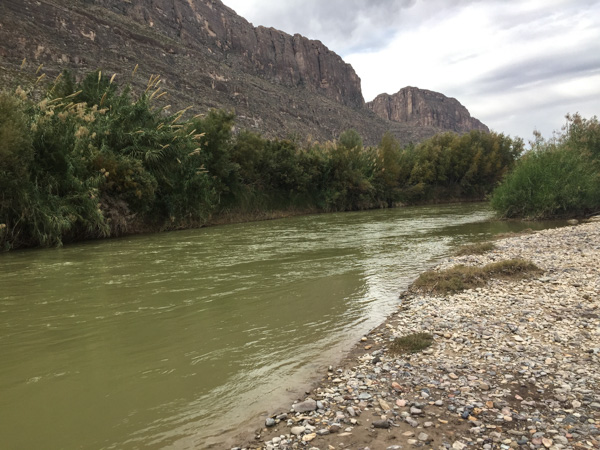 Here is a look at the river. Mexico is on the other side.
Here is a look at the river. Mexico is on the other side.
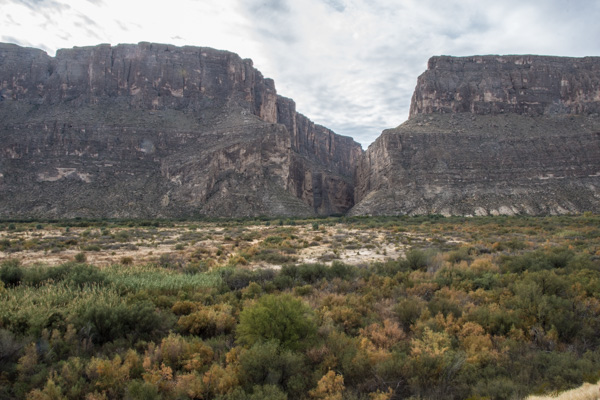 We drove on to find the entrance to Santa Elena Canyon. This is that slot seen from a distance in the previous post. It is hard to imagine from this view what it looks like in that canyon.
We drove on to find the entrance to Santa Elena Canyon. This is that slot seen from a distance in the previous post. It is hard to imagine from this view what it looks like in that canyon.
 The 3/4 mile trail into the canyon begins with rock stairs built at the lower part of the cliff.
The 3/4 mile trail into the canyon begins with rock stairs built at the lower part of the cliff.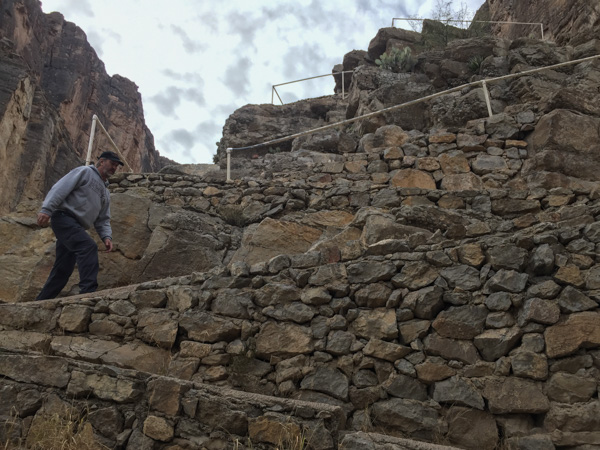
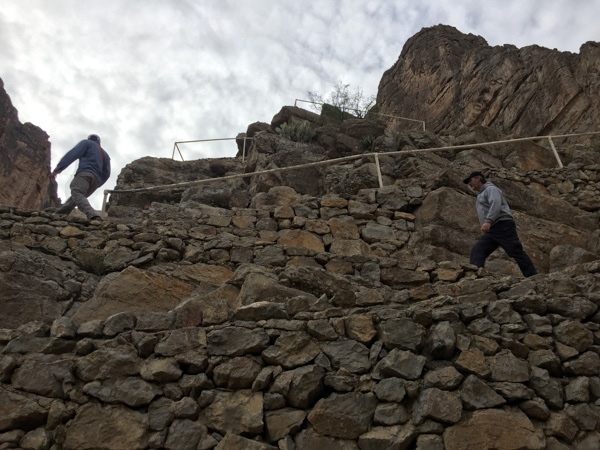
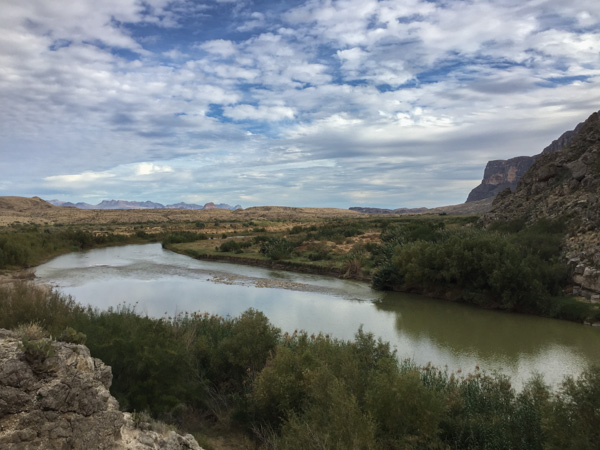 The view looking back from the stairs.
The view looking back from the stairs.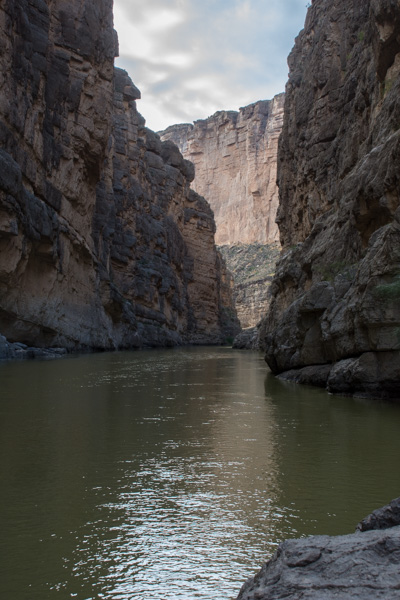
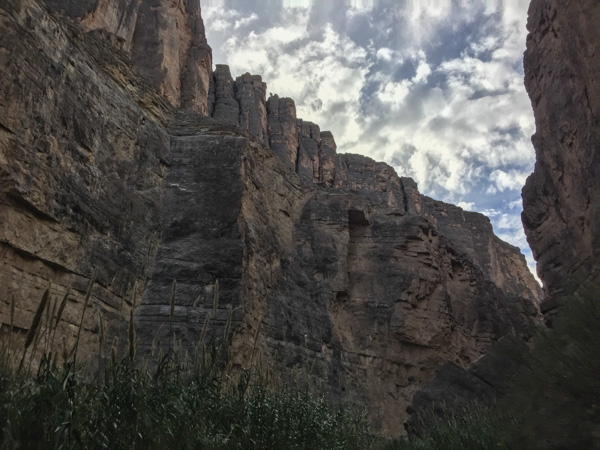
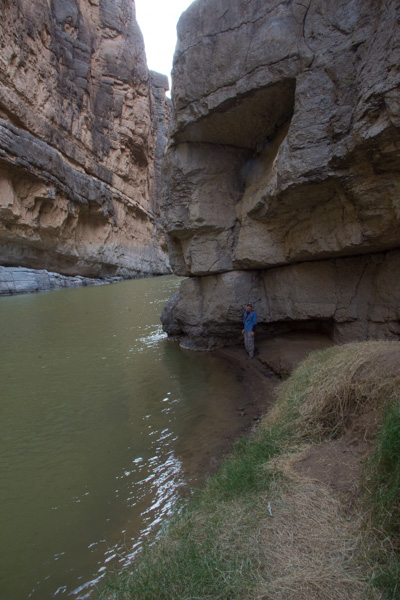 The trail ends where the cliff walls go right to the water.
The trail ends where the cliff walls go right to the water. At some points the cliffs rise 1500' from the water.
At some points the cliffs rise 1500' from the water.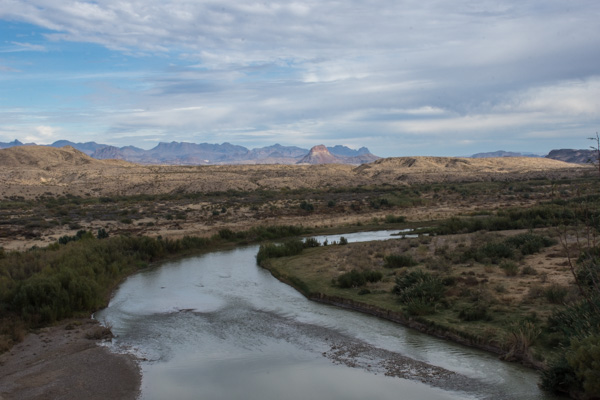 Coming back out of the canyon. In this view of the Rio Grande, Mexico is on the right. In the photos walking up the canyon, it is U.S. on the right and Mexico on the left.
Coming back out of the canyon. In this view of the Rio Grande, Mexico is on the right. In the photos walking up the canyon, it is U.S. on the right and Mexico on the left.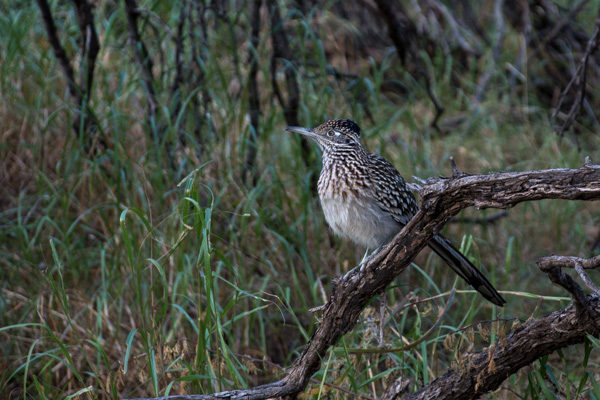 Roadrunner seen near the parking lot. We left Santa Elena Canyon and continued on a loop road that traverses the western edge of the park.
Roadrunner seen near the parking lot. We left Santa Elena Canyon and continued on a loop road that traverses the western edge of the park. We stopped at Luna's Jacal (Jacal: "a hut in Mexico and southwestern U.S. with a thatched roof and walls made of upright poles or sticks covered and chinked with mud or clay"), where Gilberto Luna raised "a large family"...
We stopped at Luna's Jacal (Jacal: "a hut in Mexico and southwestern U.S. with a thatched roof and walls made of upright poles or sticks covered and chinked with mud or clay"), where Gilberto Luna raised "a large family"... ...and later when I spotted ocotillo that looked as though they had recently bloomed.
...and later when I spotted ocotillo that looked as though they had recently bloomed.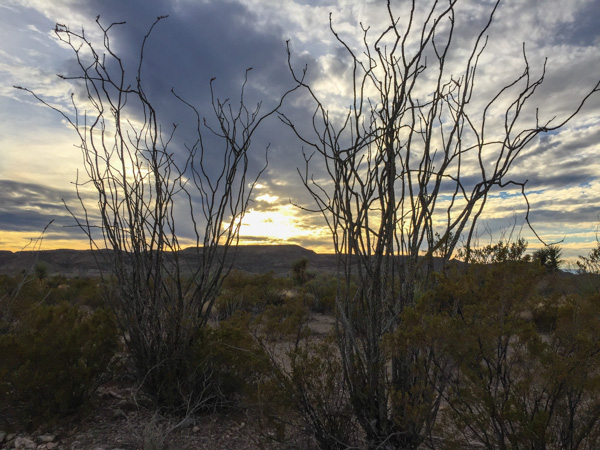 There were remnants of the red blossoms that grow at the end of the branches when there is moisture. Same with the leaves that cover the stalks for a few weeks after rainfall.
There were remnants of the red blossoms that grow at the end of the branches when there is moisture. Same with the leaves that cover the stalks for a few weeks after rainfall. We weren't able to find an open campsite to reserve, at least according to the person working the computer at the last visitor center (whom we had reason to doubt, but what could we do?)...
We weren't able to find an open campsite to reserve, at least according to the person working the computer at the last visitor center (whom we had reason to doubt, but what could we do?)...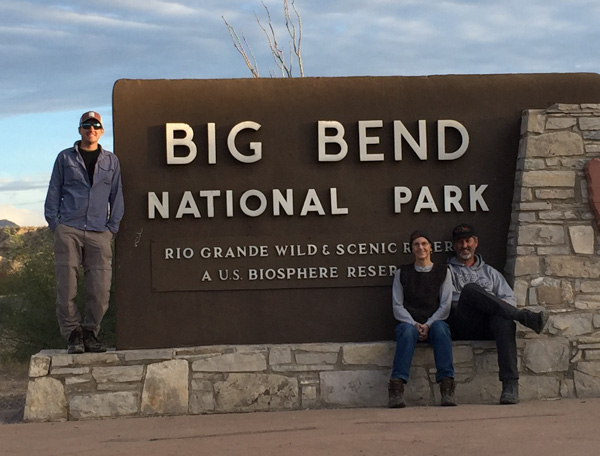 ...so we ended our day at Big Bend and drove on to finding somewhere else to camp for the Next Adventure.
...so we ended our day at Big Bend and drove on to finding somewhere else to camp for the Next Adventure.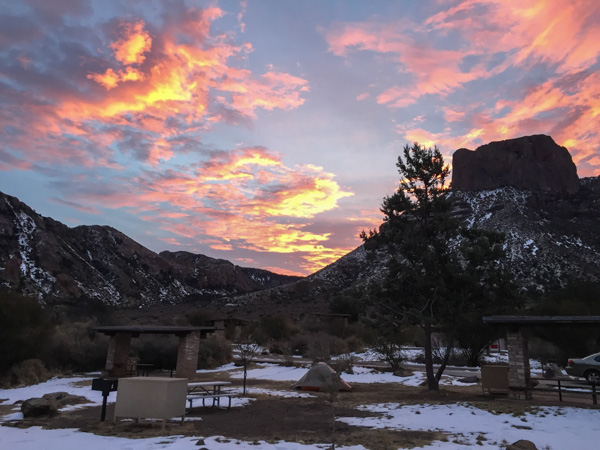 Sunrise from the campsite in the morning. I wouldn't have seen that from a motel room.
Sunrise from the campsite in the morning. I wouldn't have seen that from a motel room.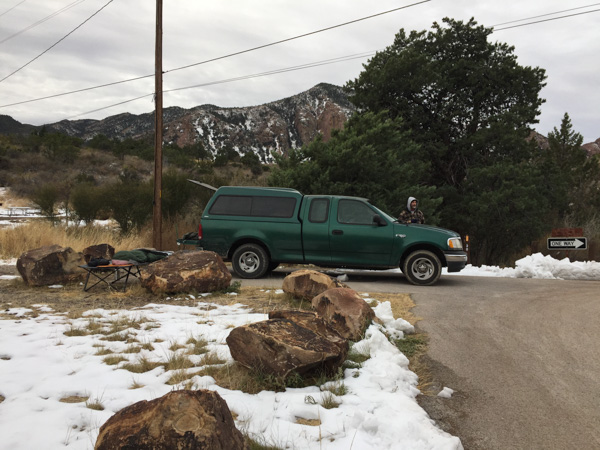 We spent the night in the back of the truck. Notice Matt's cot and sleeping bag. Fortunately no one was bothered by bears.
We spent the night in the back of the truck. Notice Matt's cot and sleeping bag. Fortunately no one was bothered by bears.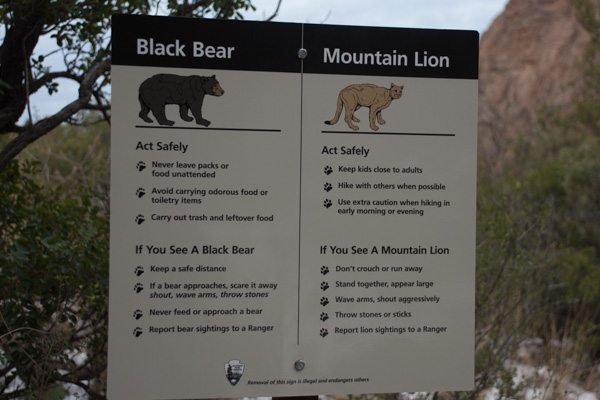 ...although we saw this sign at the trailhead right near our camp.
...although we saw this sign at the trailhead right near our camp.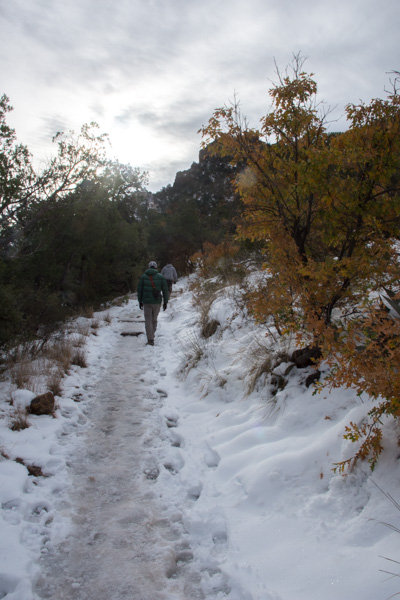 We left camp early and went for a hike up the Lost Mine Trail. I was glad that I had a walking stick with me because much of the trail was icy and slippery.
We left camp early and went for a hike up the Lost Mine Trail. I was glad that I had a walking stick with me because much of the trail was icy and slippery.
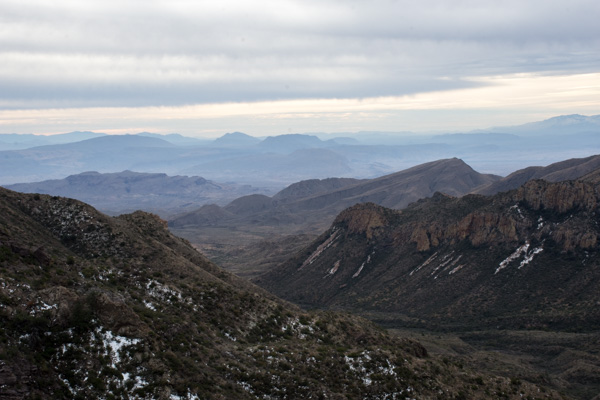 This is the view to the south from where we were standing in the last photo. The southern border of the park is the Rio Grande but I'm not sure which of these mountain ridges border the river.
This is the view to the south from where we were standing in the last photo. The southern border of the park is the Rio Grande but I'm not sure which of these mountain ridges border the river.
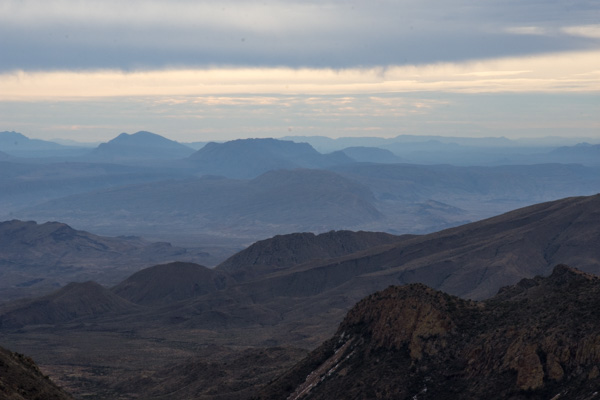 We had only a day and a half to spend in this area so we didn't plan to do any long hikes, but instead see as much of the Park as we could and get out where there were signs and shorter trails.
We had only a day and a half to spend in this area so we didn't plan to do any long hikes, but instead see as much of the Park as we could and get out where there were signs and shorter trails.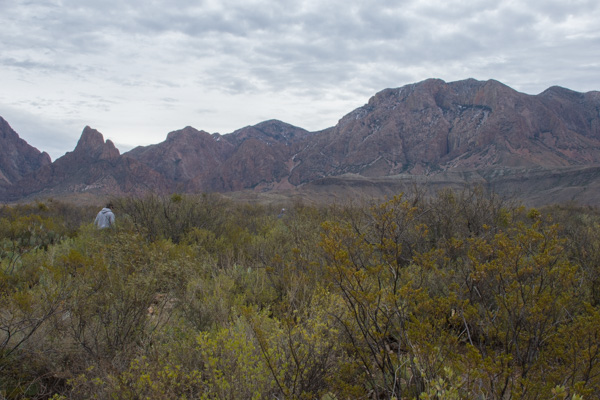 This stop was at the Sam Nail Ranch where there is a short trail to the remnants of an adobe dwelling built around 1909 when the Nail family lived here.
This stop was at the Sam Nail Ranch where there is a short trail to the remnants of an adobe dwelling built around 1909 when the Nail family lived here.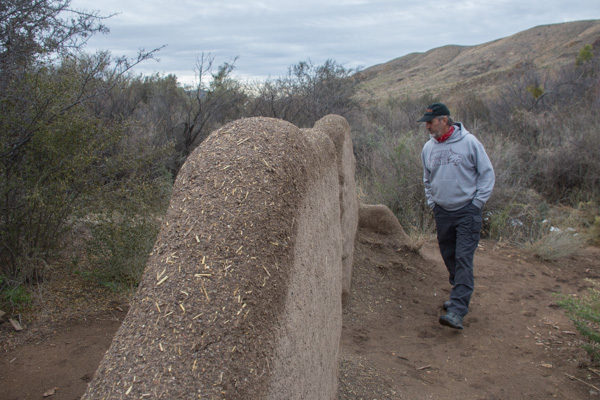 The family planted fruit trees and raised livestock, living here until the 1940's.
The family planted fruit trees and raised livestock, living here until the 1940's.


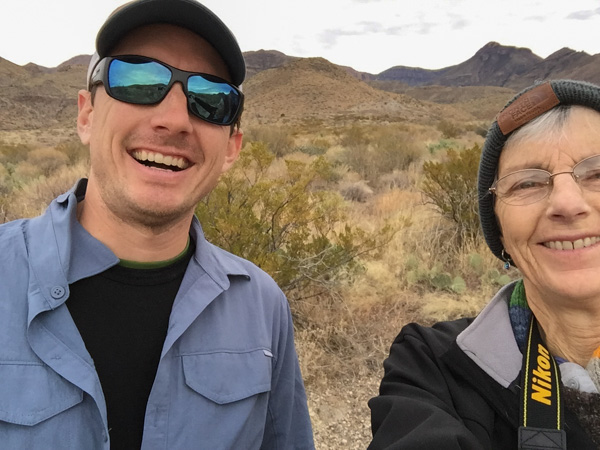 "Matt, hold still."
"Matt, hold still."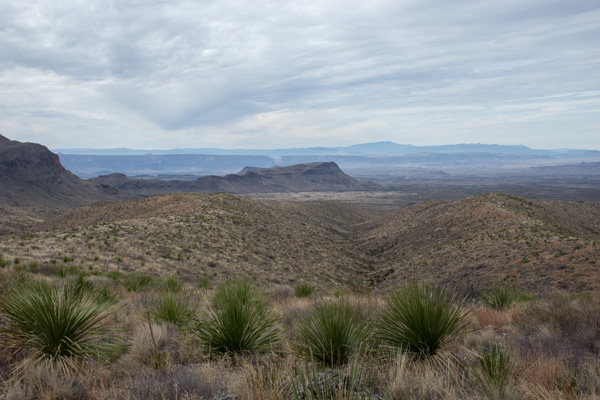 View from Sotol Vista. Do you see that slot in the middle ridge, just left of the photo's center? That is Santa Elena Canyon, about 12 miles southwest of this point, where the Rio Grande slices through the mountain, forming a narrow canyon with 1500' walls. That will be for the next post.
View from Sotol Vista. Do you see that slot in the middle ridge, just left of the photo's center? That is Santa Elena Canyon, about 12 miles southwest of this point, where the Rio Grande slices through the mountain, forming a narrow canyon with 1500' walls. That will be for the next post.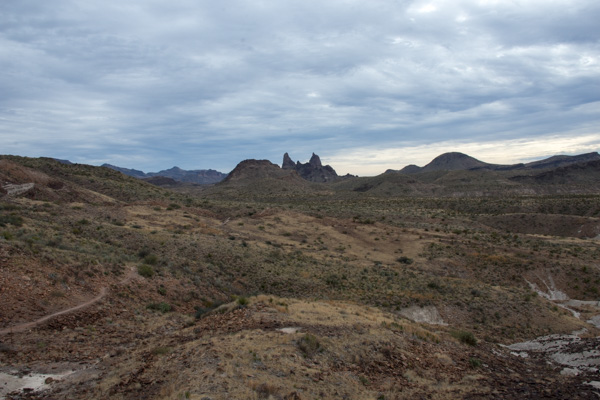 The Mule Ears View Point was the next stop.
The Mule Ears View Point was the next stop.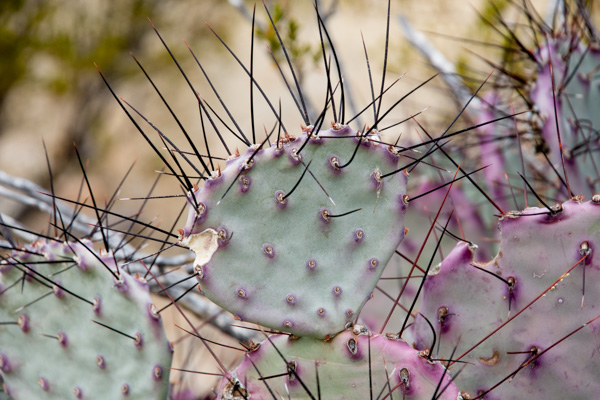 I didn't identify all the different kinds of cactus, but noticed some that were distinctly purple.
I didn't identify all the different kinds of cactus, but noticed some that were distinctly purple.
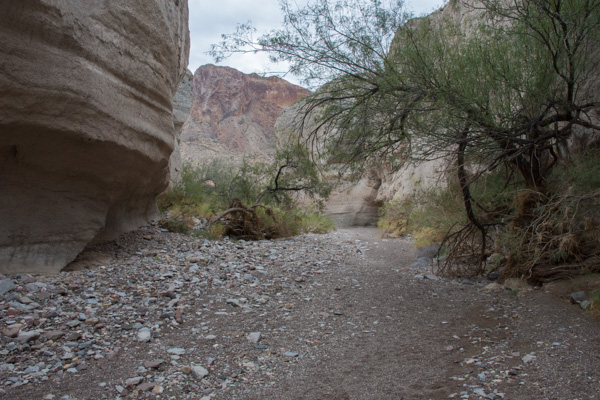 We walked into Tuff Canyon, so named for it's volcanic origins.
We walked into Tuff Canyon, so named for it's volcanic origins.
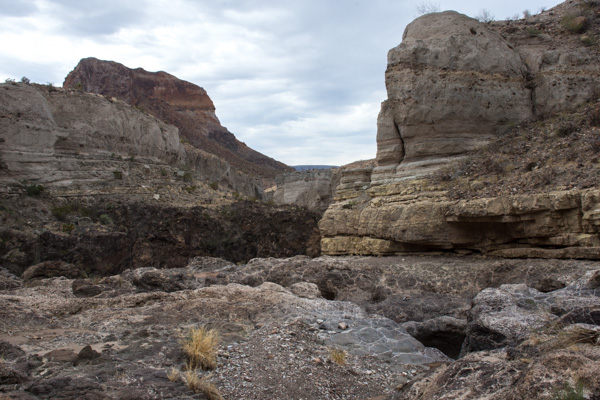 Spectacular!
Spectacular!

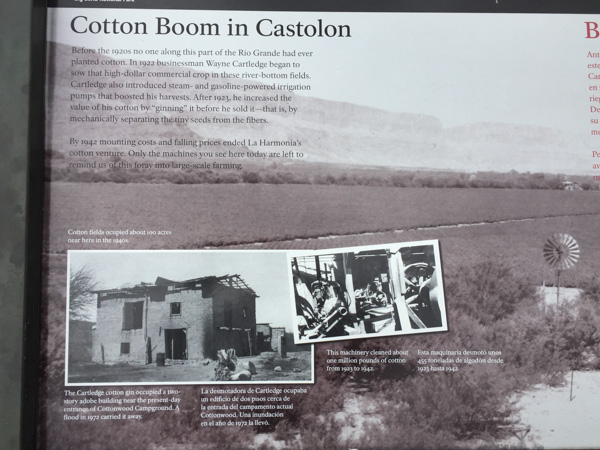 There were a lot of interpretive signs at this point. Castolon was first settled in 1901 and became a destination for refugees fleeing the Mexican Revolution. Barracks were built but never used by the army and in the 1920's the La Harmonia Company established a trading post and started growing and ginning cotton. That venture ended in the 1940's.
There were a lot of interpretive signs at this point. Castolon was first settled in 1901 and became a destination for refugees fleeing the Mexican Revolution. Barracks were built but never used by the army and in the 1920's the La Harmonia Company established a trading post and started growing and ginning cotton. That venture ended in the 1940's.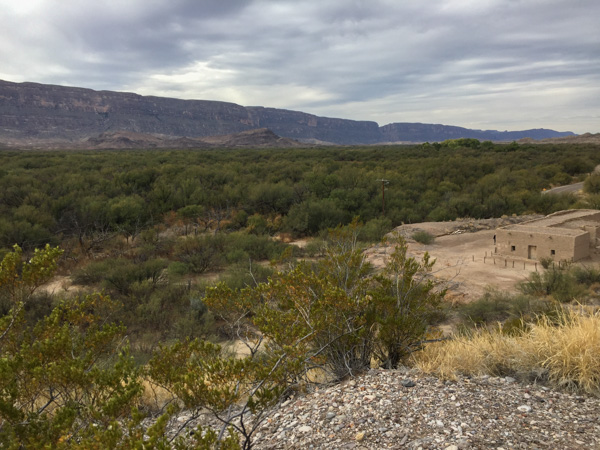 This is the modern day view of that same landscape.
This is the modern day view of that same landscape.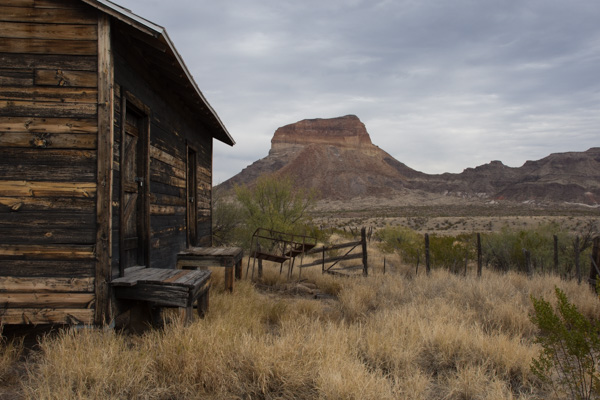 One of the old building that still remains at Castolon.
One of the old building that still remains at Castolon.
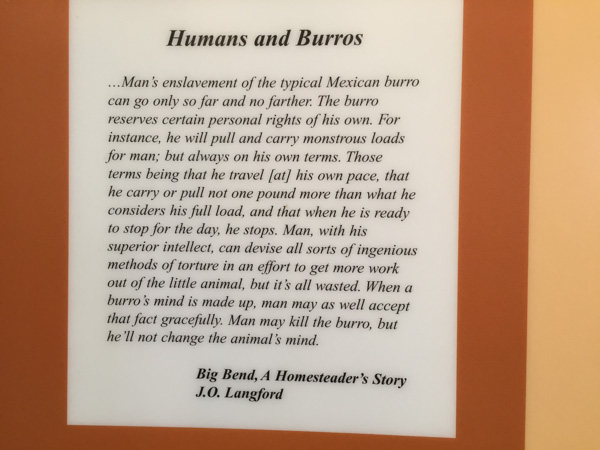 I think this statement is true.
I think this statement is true.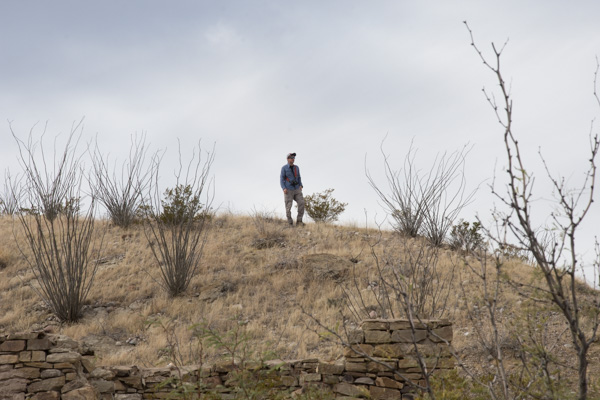 We stopped at the Dorgan House Trail, where there were more ruins.
We stopped at the Dorgan House Trail, where there were more ruins.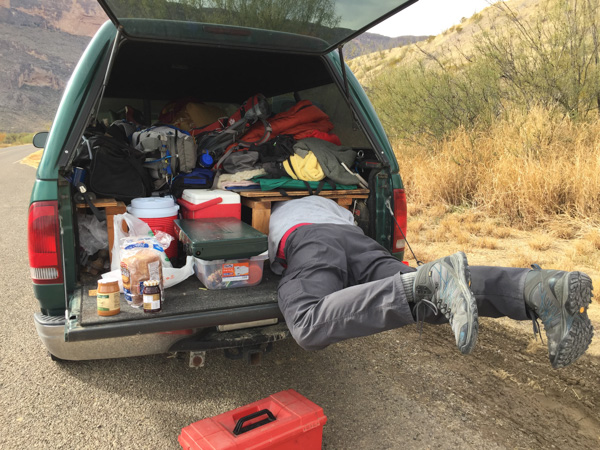 It felt like lunch time. Dan couldn't fit all the way in where he had stashed the box with my granola. Eventually I squeezed in there and he pulled me out by my feet because I was laughing too hard to get out myself.
It felt like lunch time. Dan couldn't fit all the way in where he had stashed the box with my granola. Eventually I squeezed in there and he pulled me out by my feet because I was laughing too hard to get out myself.